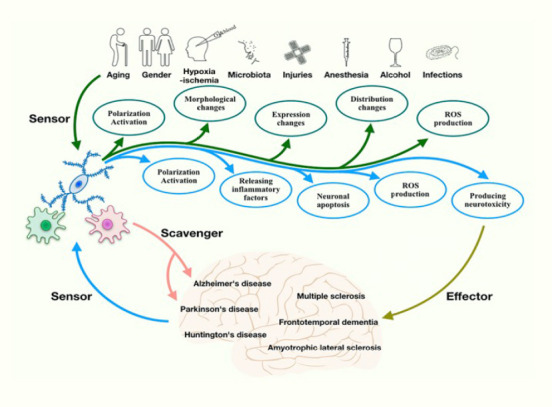Figure 2.

Microglia act as both sensors and effectors.
Microglia are activated, change morphology and distribution, and produce reactive oxygen species (ROS) in response to various conditions, including aging, sex, stress, injuries, infections, hypoxia-ischemia, ROS, microbiota, anesthesia and alcohol, which suggests that they can act as a sensor. Once activated, microglia can produce ROS and inflammatory factors to induce neurotoxicity and neuronal apoptosis. They can, therefore, act as an effector in neurodegenerative diseases. These diseases can further affect the function and aggregation of microglia.
